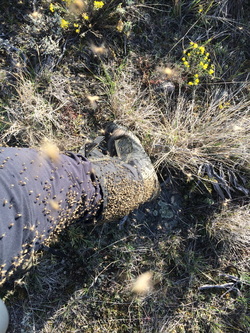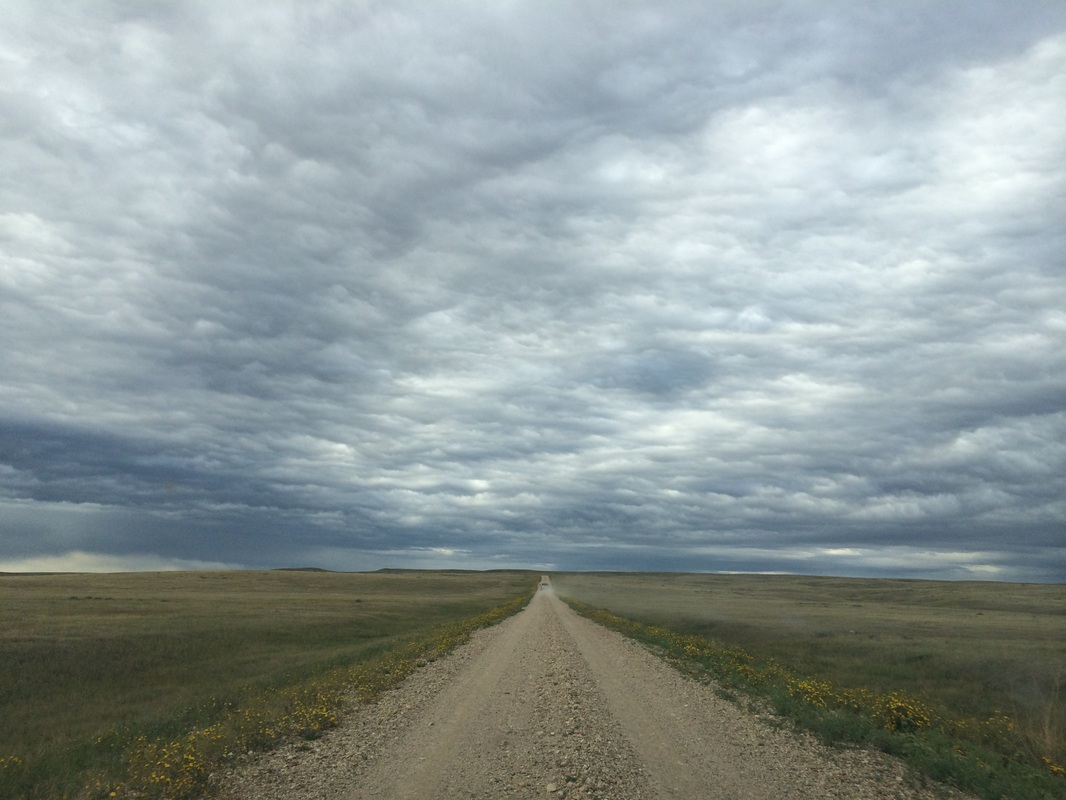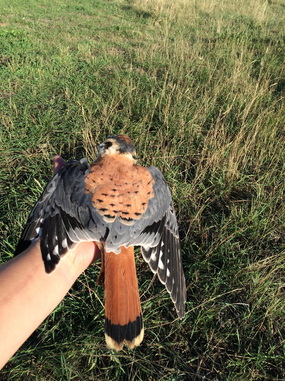 Yes, those are all mosquitoes.
Yes, those are all mosquitoes.
One thing is certain: The prairie is a land of extremes. I arrived two weeks ago—wending down a dirt road beneath a huge cloud-speckled sky—a few days after a storm that dumped more than half the precipitation usually seen in a year. The prairie had turned from brown to green in the course of a few days, the streams were swollen, and the roads deeply rutted.
Next came the mosquitoes (or “mozzies” as our Australian crewmember calls them). They descended plague-like, biting through our clothing, catching in our eyelashes and mouths.
We hike the transects with mosquito nets and double layers, surrounded by a constant hum, trying to spot wildlife through the haze. We wear gloves and hoods, constantly readjusting so they can’t squeeze through the cracks, sweating in the 70-degree days. We start at 6:30 a.m. to beat them, but they swarm by 7:15. At night, they pitter-patter against my tent like rain, trying to get in.
Though I have only lived on the prairie for two weeks, I know this landscape better than some I have lived in for years. Our job here is to pay close attention, to go outside daily and observe. Hiking transects and gathering data is different than hiking or backpacking. You can’t hike a transect while staring at your boots or lost in your thoughts. You must be present.
By simply observing, we learn things that are impossible to teach in a classroom. We learn how to listen to a landscape instead of talking over it.
There is something abrupt about the wildlife here—whether it is a rattlesnake in the road or a badger peeking out of a hole, it is impossible to ignore.
One morning last week I woke up to find a dead kestrel in front of the outhouse. I had seen that individual before, a male that glided around camp and perched in the eaves. It got down to 28 degrees that night, and there he lay, a tiny falcon, cold and perfect.
He fit in the palm of my hand, long rusty tail feathers protruding past my wrist. Big shiny eyes hid behind yellow lids that closed upwards and were ringed with tiny black lashes. The pupils reflected my own face, hair blowing in the wind, the morning sun a pinprick behind me.
Learn more this and other ASC projects on our website, the Field Notes blog, and by following us on Facebook, Twitter, Instagram and Google+.


